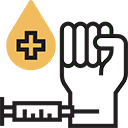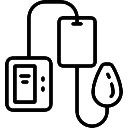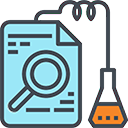The Glucose Prediction model is a cutting-edge machine learning solution developed to provide accurate and non-invasive glucose monitoring, revolutionizing the management of diabetes by leveraging postprandial glucose (PPG) signals and advanced prediction algorithms.
Overiew
The Glucose Prediction model is an innovative machine-learning solution developed by DeepDiveAI professionals to transform diabetes management. Leveraging postprandial glucose (PPG) signals, the model accurately predicts a user’s glucose levels, providing a non-invasive alternative to traditional finger prick testing and overcoming the limitations of continuous glucose monitoring systems (CGMs). With over 20 trained machine learning models, including random forest, CNNs, and deep neural nets to enhance accuracy, the model achieves exceptional performance. By enabling accurate and convenient glucose monitoring, the Glucose Prediction model empowers individuals with diabetes to better manage their blood sugar levels, improving their quality of life and reducing the healthcare burden.

The Problem
The Glucose Prediction model developed by DDAI professionals offers a transformative solution for individuals with diabetes, addressing several critical glucose monitoring and management challenges. Some of the fundamental problems that the Glucose Prediction model effectively solves include

Lack Of Accurate And Non-Invasive Glucose Monitoring
The current methods for monitoring glucose levels lack accuracy and non-invasiveness, making it challenging for individuals with diabetes to track their blood sugar effectively and painlessly.

Inconvenience And Discomfort In Diabetes Management
Traditional glucose monitoring techniques, such as finger pricks, are inconvenient and uncomfortable for individuals with diabetes, leading to lower compliance with regular monitoring routines and potential disruptions in diabetes management.

Limited Precision In Glucose Level Predictions
Existing methods for predicting glucose levels often lack precision, hindering individuals' ability to make accurate decisions about their dietary choices, medication adjustments, and overall diabetes management strategies. Improved precision is crucial for better management of blood sugar levels.
How does it work
The Glucose Prediction model utilizes postprandial glucose (PPG) signals and machine learning algorithms to provide accurate and non-invasive glucose monitoring. The model analyzes patterns and trends to predict glucose levels by extracting relevant features from PPG signals. Various machine learning algorithms, including random forest, CNNs, and deep neural networks, are trained using a dataset of PPG signals and corresponding glucose levels. The model achieves high accuracy by utilizing Clarke’s grid, ensuring precise predictions. Overall, the Glucose Prediction model offers an effective and reliable approach to glucose monitoring for individuals with diabetes.

Feature Extraction From Postprandial Glucose Signals
The Glucose Prediction model begins by extracting relevant features from postprandial glucose (PPG) signals. These signals capture the glucose levels in the bloodstream after a meal, providing valuable data for predicting and managing diabetes. The model analyzes patterns, trends, and fluctuations in the PPG signals to identify meaningful features contributing to accurate glucose level predictions.

Training With Machine Learning Algorithms
The Glucose Prediction model employs various machine learning algorithms, including random forest, convolutional neural networks (CNNs), and deep neural networks. These algorithms are trained using a dataset including PPG signals collected from wearable devices or sensors and corresponding glucose levels. The model learns to associate specific patterns in the PPG signals with glucose level changes, enabling it to make predictions based on new input data.

Utilizing Clarke’s Grid For Accuracy Improvement
Clarke’s grid, a well-known method for evaluating the accuracy of glucose prediction models, is utilized to enhance the performance of the Glucose Prediction model. The grid classifies the model’s predictions into regions based on their proximity to the reference glucose values. By achieving an accuracy 98%+ for the A+B regions of Clarke’s grid, the model demonstrates its ability to accurately predict glucose levels, improving the reliability and effectiveness of non-invasive glucose monitoring.
The Solution
The Glucose Prediction model offers a range of innovative solutions to revolutionize diabetes management. Providing accurate and non-invasive glucose monitoring eliminates the discomfort and inconvenience associated with traditional methods. Personalized guidance and recommendations empowers individuals to optimize their blood sugar management. Real-time alerts and interventions ensure timely actions, while accessible diabetes education and information enable individuals to make informed decisions about their health. The Glucose Prediction model delivers comprehensive solutions that enhance the quality of life for individuals with diabetes.

Accurate And Non-Invasive Glucose Monitoring
The Glucose Prediction model offers a precise and painless alternative to traditional glucose monitoring methods. Leveraging machine learning provides accurate predictions based on postprandial glucose signals, eliminating the need for frequent finger pricks and enhancing the overall monitoring experience.

Personalized Diabetes Management
With its ability to analyze glucose data and extract relevant features, the model offers personalized guidance and recommendations for blood sugar management. It assists individuals with tailored advice on meal planning, exercise routines, medication adherence, and overall diabetes management strategies, optimizing their health outcomes.

Real-Time Alerts And Interventions
The Glucose Prediction model integrates with wearable devices or continuous glucose monitoring systems (CGMs) to provide real-time support. It offers instant alerts for abnormal glucose readings and potential hypoglycemic/hyperglycemic episodes, recommending appropriate interventions and guiding individuals on when to seek medical attention, ensuring their safety and well-being.

Accessible Diabetes Education & Information
The model is a reliable source of information and education on diabetes management. It provides accurate and up-to-date resources, answers frequently asked questions and addresses common concerns. Through articles, videos, and reputable links, it empowers individuals to make informed decisions about their health and effectively manage their diabetes.
The Challenges
Accuracy Enhancement
The Glucose Prediction model overcomes the challenge of inaccurate glucose level predictions. Leveraging machine learning algorithms and analyzing postprandial glucose signals achieves high precision in predicting glucose levels. This addresses the need for reliable and precise monitoring, enabling individuals to make informed dietary choices, medication adjustments, and overall diabetes management strategies.
Convenience & Comfort Improvement
The Glucose Prediction model overcomes the inconvenience and discomfort associated with traditional glucose monitoring techniques. Offering a non-invasive approach to monitoring, eliminates the need for frequent finger pricks and provides a more convenient and comfortable experience for individuals with diabetes. This improvement in convenience and comfort encourages better compliance with glucose monitoring protocols and enhances overall diabetes management.

Applications

Personal Diabetes Assistant
The Glucose Prediction model can serve as a personal diabetes assistant, providing real-time feedback, personalized recommendations, and reminders for individuals with diabetes to manage their blood sugar levels effectively. It offers guidance on meal planning, medication adherence, and exercise routines as a supportive tool for daily diabetes management.

Remote Patient Monitoring
The Glucose Prediction model enables remote patient monitoring, allowing healthcare professionals to track and monitor their patients’ glucose levels without the need for frequent in-person visits. By integrating with wearable devices or continuous glucose monitoring systems, the model provides healthcare providers valuable insights for remote assessment, timely intervention, and adjusting treatment plans.

Diabetes Management Mobile Apps
The Glucose Prediction model can be integrated into mobile applications designed for diabetes management. The model’s accurate glucose predictions and personalized recommendations can empower users to monitor their blood sugar levels, track their progress, and make informed decisions about their daily activities, meals, and medications through user-friendly smartphone or tablet interfaces.
Wellness And Fitness Tracking
The Glucose Prediction model can be utilized in wellness and fitness tracking applications to provide insights into the impact of exercise, diet, and lifestyle choices on blood sugar levels. By integrating with fitness wearables and nutrition tracking apps, the model helps individuals understand how their activities and choices affect their glucose levels, supporting their overall well-being and promoting healthy habits.

Research And Clinical Trials
The Glucose Prediction model can be employed in research studies and clinical trials focusing on diabetes management and treatment. Its ability to provide accurate glucose predictions based on postprandial signals can contribute valuable data for assessing the effectiveness of interventions, evaluating treatment outcomes, and refining medical protocols, ultimately advancing the field of diabetes research and improving patient care.